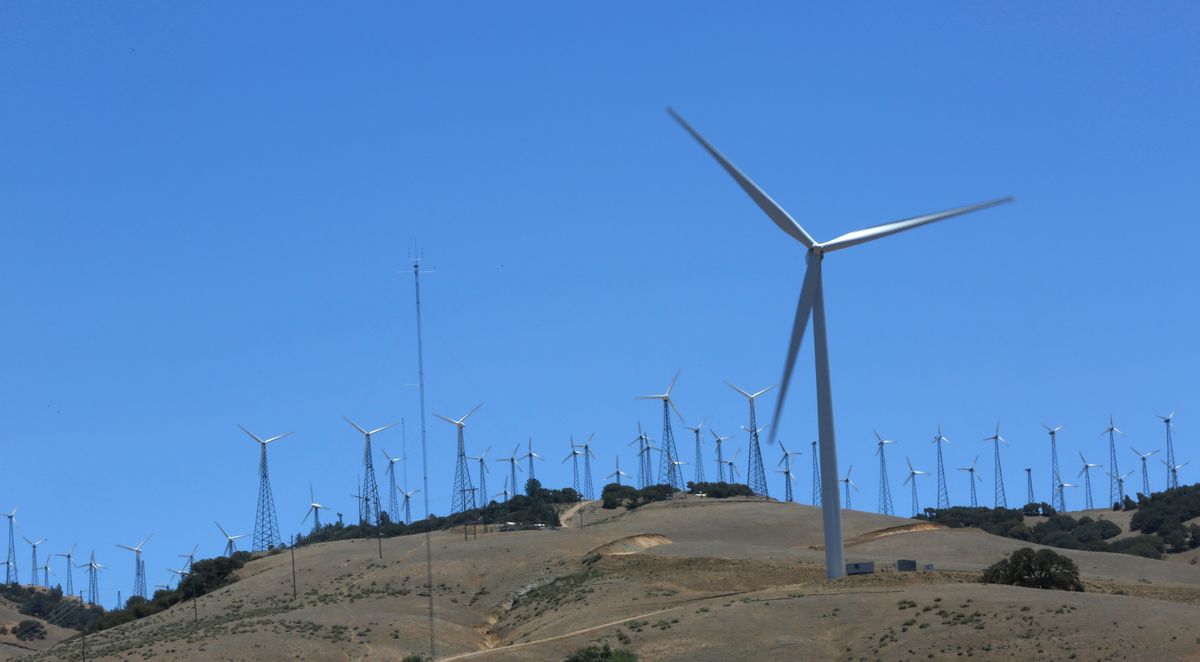 Transitioning the world to 100 percent renewable electricity isn't just some environmentalist pipe dream — it's "feasible at every hour throughout the year" and is more cost-effective than the current system, which largely relies on fossil fuels and nuclear energy, a new study claims.
Transitioning the world to 100 percent renewable electricity isn't just some environmentalist pipe dream — it's "feasible at every hour throughout the year" and is more cost-effective than the current system, which largely relies on fossil fuels and nuclear energy, a new study claims.
The research, compiled by Finland's Lappeenranta University of Technology (LUT) and the Berlin-based nonprofit Energy Watch Group (EWG), was presented Wednesday at the Global Renewable Energy Solutions Showcase, a stand-alone event coinciding with the COP 23 climate talks in Bonn, Germany.
The authors say that the existing renewable energy potential and technologies coupled with storage can generate enough energy to meet the global electricity demand by 2050.
The researchers estimate that the switch will bring the total levelized cost of electricity on a global average down to €52 ($61) per megawatt-hour (including curtailment, storage and some grid costs) compared to €70 (82) megawatt-hour in 2015.
“A full decarbonization of the electricity system by 2050 is possible for lower system cost than today based on available technology," said Christian Breyer, the lead author of the study.
"Energy transition is no longer a question of technical feasibility or economic viability, but of political will," added Breyer, who is also a professor of Solar Economy at LUT and serves as chairman of EWG's Scientific Board.
According to the study, solar power and battery storage are critical parts of the transition. Falling prices will also lead to widespread adoption of the technologies. The researchers predict that the globe's electricity mix by 2050 will consist of solar photovoltaics (69 percent), wind energy (18 percent), hydropower (8 percent) and bioenergy (2 percent).
By following this path, greenhouse gas emissions in the electricity sector will come down to zero and drastically reduce total losses in power generation, the study found. Not only that, the renewable energy transition would create 36 million jobs by 2050, 17 million more than today.
"There is no reason to invest one more dollar in fossil or nuclear power production," EWG president Hans-Josef Fell said. "Renewable energy provides cost-effective power supply. All plans for a further expansion of coal, nuclear, gas and oil have to be ceased. More investments need to be channeled in renewable energies and the necessary infrastructure for storage and grids. Everything else will lead to unnecessary costs and increasing global warming."
This is the not the first time researchers have suggested that the planet's road to 100 percent renewables is possible. Earlier this year, Stanford University professor Mark Jacobson and 26 co-authors published a study and created clean energy roadmaps for 139 individual countries. The chosen countries emit more than 99 percent of all carbon dioxide worldwide.
Here are the key findings of the current study:
- Existing renewable energy potential and technologies, including storage can generate sufficient and secure power to cover the entire global electricity demand by 2050. The world population is expected to grow from 7.3 to 9.7 billion. The global electricity demand for the power sector is set to increase from 24,310 TWh in 2015 to around 48,800 TWh by 2050.
- Total levelized cost of electricity (LCOE) on a global average for 100% renewable electricity in 2050 is €52/MWh (including curtailment, storage and some grid costs), compared to €70/MWh in 2015.
- Due to rapidly falling costs, solar PV and battery storage increasingly drive most of the electricity system, with solar PV reaching some 69%, wind energy 18%, hydropower 8% and bioenergy 2% of the total electricity mix in 2050 globally.
- Wind energy increases to 32% by 2030. Beyond 2030 solar PV becomes more competitive. The solar PV supply share increases from 37% in 2030 to about 69% in 2050.
- Batteries are the key supporting technology for solar PV. The storage output covers 31% of the total demand in 2050, 95% of which is covered by batteries alone. Battery storage provides mainly diurnal storage, and renewable energy based gas provides seasonal storage.
- Global greenhouse gas emissions significantly reduce from about 11 GtCO2eq in 2015 to zero emissions by 2050 or earlier, as the total LCOE of the power system
- The global energy transition to a 100% renewable electricity system creates 36 million jobs by 2050 in comparison to 19 million jobs in the 2015 electricity system.
- The total losses in a 100% renewable electricity system are around 26% of the total electricity demand, compared to the current system in which about 58% of the primary energy input is lost.
The research was co-funded by the German Federal Environmental Foundation and the Stiftung Mercator.



Shares